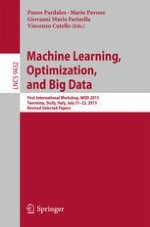2015 | OriginalPaper | Buchkapitel
Characterization of the \(\#k\)–SAT Problem in Terms of Connected Components
verfasst von : Giuseppe Nicosia, Piero Conca
Erschienen in: Machine Learning, Optimization, and Big Data
Aktivieren Sie unsere intelligente Suche, um passende Fachinhalte oder Patente zu finden.
Wählen Sie Textabschnitte aus um mit Künstlicher Intelligenz passenden Patente zu finden. powered by
Markieren Sie Textabschnitte, um KI-gestützt weitere passende Inhalte zu finden. powered by
